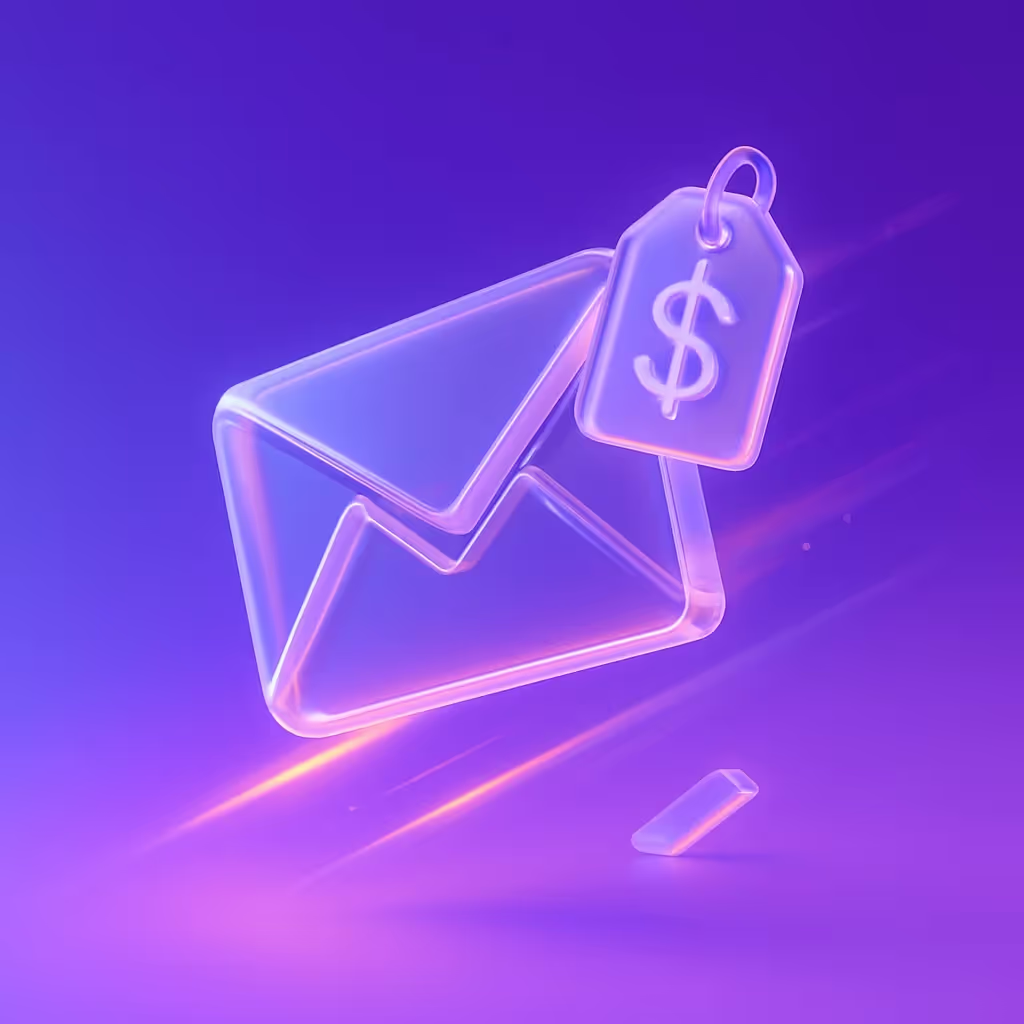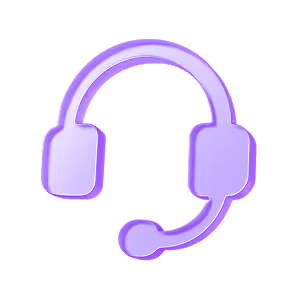B2B sales processes have changed rapidly as new technology reshapes how teams connect with prospects.
One area undergoing significant transformation involves communication and outreach, driven in large part by the adoption of AI email assistants. Sales teams now expect streamlined automation tools that save time and allow for higher-quality engagement at scale.
Key Drivers Behind Adoption
Growing deal complexity, larger databases of prospects, and the need for swift, personalized communication have pushed sales teams to automate repetitive tasks. AI email assistants help businesses move away from manual follow-ups, inconsistent outreach, and fragmented campaign management. These tools analyze prospect data, generate relevant follow-ups, and trigger communication across multiple channels—freeing sales reps to focus attention where it matters: relationship building and closing deals.
Platforms like Overloop and other AI-driven solutions respond to these market demands by integrating outreach, lead sourcing, and deliverability support within one workspace. This automation shift not only reduces manual errors but also lifts expectations for sales productivity and campaign ROI. As teams seek measurable gains, AI email assistants have moved from early adoption to central components of modern B2B sales strategy.
What Is an AI Email Assistant?
AI email assistants have emerged as core components within sales automation strategies. These tools use artificial intelligence to automate repetitive email tasks, such as drafting initial outreach, scheduling personalized follow-ups, and suggesting response templates. Their main value lies in increasing consistency and speed in B2B sales communication while reducing manual workload. For both sales teams and managers, this means fewer missed opportunities and more time for high-value interactions.
Core Features of AI Email Assistants
- Automated Follow-Ups: Schedule and send timely emails based on recipient behavior or campaign rules.
- Personalization at Scale: Use natural language processing to adapt messages for each prospect or segment, moving beyond simple mail merges.
- Inbox Management: Automatically filter, categorize, and surface high-priority replies for faster engagement.
- Analytics and Optimization: Track open, click, and response rates and recommend adjustments for future campaigns.
Unlike basic "mail merge" automation tools, AI-driven assistants learn from data and context. They analyze recipient behavior, predict optimal send times, and even generate new message variants to improve campaign performance. By leveraging these capabilities, solutions like Overloop let sales teams move from rigid one-size-fits-all outreach to personalized communication that feels human while remaining fully automated.
FeatureBasic AutomationAI Email AssistantMessage PersonalizationName insert, templatesDynamic, context-aware copyFollow-Up SchedulingStatic time delaysBehavior-based timingContent GenerationUser-generated, manualAI-generated, adaptiveLearning/OptimizationManual tweaksContinuous, data-driven
This difference drives measurable results: higher response rates, improved lead engagement, and less manual effort for sales professionals.
How AI Email Assistants Integrate With Sales Workflows
AI email assistants now function as core components within modern B2B sales environments. By connecting directly to existing sales technologies, they enable sales teams to launch, monitor, and optimize campaigns from a single interface. Integration with customer relationship management (CRM) platforms—including Salesforce, HubSpot, and Pipedrive—allows these tools to synchronize prospect data, sales stages, and activity history. This reduces manual data entry and ensures no lead is left behind in the pipeline.
Multi-Channel Campaign Management
AI email assistants orchestrate outbound activity across email, LinkedIn, and other communication channels. Sales representatives can define outreach sequences that automatically progress based on recipient engagement, such as email opens or LinkedIn replies. Automating these steps ensures follow-ups occur at the optimal time, consistently and without manual oversight. For example, Overloop’s solution supports automated email and LinkedIn outreach, streamlining how teams conduct high-volume outbound campaigns.
Automated Follow-Up Sequencing
Manual follow-up is often inconsistent due to workload or missed reminders. AI-powered assistants address this by generating, sending, and tracking follow-up emails according to predefined rules and recipient behaviors. These rules can include sending tailored messages after a certain time period or responding differently to opens, clicks, and replies. This sequencing improves engagement rates and frees sales professionals to focus on qualified leads.
- CRM Integration: Real-time sync with sales databases to centralize outreach and results.
- Personalized Messaging: AI-generated templates use prospect data to avoid generic emails.
- Reporting: Built-in analytics show which channels and sequences perform best, guiding data-driven adjustments.
By using AI email assistants for campaign management and follow-ups, B2B sales teams sustain high-frequency outreach and nurture leads efficiently. This level of integration turns routine outreach into a streamlined process, setting a new standard for sales productivity and effectiveness.
Benefits for SDRs and Sales Managers
Sales development representatives (SDRs) and sales managers gain direct and measurable advantages by relying on AI email assistants in their daily work. Manual email tasks once filled sales calendars, often forcing teams to choose between quality and quantity in their outreach. AI-driven tools shift this balance, allowing teams to achieve both—without sacrificing time or accuracy.
Productivity Gains and Time Savings
Automating routine activities frees SDRs to focus on high-impact conversations. AI email assistants handle tasks such as:
- Following up with leads at precisely scheduled intervals
- Drafting and sending initial cold emails
- Managing and categorizing responses for easy next steps
This automation often cuts the manual workload by 50% or more in busy sales environments, accelerating the cycle from first touch to booked meeting. Managers gain the ability to monitor progress in real-time, as campaign analytics and performance data are always up to date.
Enhanced Personalization and Lead Management
Reaching hundreds of prospects with identical messages rarely works. AI email assistants adapt content using prospect data, previous interactions, and contextual triggers. This dynamic approach increases reply and conversion rates, as messages feel hand-crafted to each recipient. For example, Overloop’s AI leverages multiple data points to build nuanced, relevant messages—at scale—while automatically suppressing contacts who reply or opt out.
Centralizing inbox management and prioritizing replies enables SDRs to spend more time on engaged leads and less on sorting emails. Sales managers benefit from improved lead hygiene, as AI-powered systems automatically update CRM records and segment prospects based on behavior and engagement.
Challenges: Deliverability, Spam Protection, and Personalization at Scale
AI email assistants give B2B sales teams much needed scale, but they introduce new operational challenges. Managing deliverability, avoiding spam filters, and achieving genuine personalization across large lists requires precision and ongoing adjustments. Even with advanced automation, these remain core friction points for sales teams aiming for reliable results.
Maintaining Email Deliverability
Deliverability issues undermine even the best-crafted campaigns. Sending high volumes of automated emails can trigger provider limits or blacklisting. Deliverability depends on:
- Consistent sending domains and authentication (SPF, DKIM, DMARC)
- Healthy sending frequency and balanced sending patterns
- Verified recipient data to avoid high bounce rates
Platforms like Overloop support sender authentication, automatic warm-up sequences, and real-time bounce monitoring to help keep messages out of spam folders.
Avoiding Spam Filters
AI tools that generate bland or repetitive content risk being marked as spam. Common triggers include:
- High link density and salesy language
- Lack of recipient engagement or poor reputation history
- Sending to unverified addresses
Fine-tuning AI outputs, rotating message variants, and employing automated list hygiene can improve inbox placement. Some AI sales platforms also analyze spam scores before sending.
Personalizing at Scale
Personalization often loses quality as campaigns grow. True one-to-one messaging depends on more than just name insertion. AI assistants use data enrichment to reference a prospect’s company, industry, or recent activity. Overloop applies NLP-powered templates that adapt content for each recipient, increasing relevance and resonance. Yet, poor data quality or generic fields remain risks, requiring continuous data checks as campaigns expand.
Case Study: Overloop’s AI-Powered Sales Automation
Sales teams working in high-volume, competitive B2B environments need tools that manage complex outreach tasks with minimal manual input. Overloop addresses these challenges by allowing teams to automate and personalize interactions at scale, while reducing risks such as missing leads or ending up in spam folders.
AI-Driven Lead Sourcing and Sequence Automation
Overloop connects directly to a vast B2B contacts database, generating verified leads based on precise targeting criteria. Once prospects are identified, the AI crafts tailored outreach messages for each contact—factoring in attributes like role, company, and previous engagement. Sales representatives can enroll leads into multi-channel sequences, covering both email and LinkedIn, so follow-up messages reach the right inboxes at optimal times. This process operates continuously, freeing up team members to act only when real engagement signals are detected.
Personalized Communication Without Manual Overhead
The platform’s AI generates unique email copy in over 80 languages, drawing on company and prospect details to avoid generic messaging. Suppression lists and reply detection prevent duplicate outreach and automatic removal of uninterested contacts, maintaining strong sender reputations and trust with prospects. Campaign analytics show open, click, and response rates, enabling rapid adjustments and supporting ongoing sales optimization.
Results and Measured Outcomes
B2B teams using Overloop often report:
- Up to 3x more personalized outbound messages delivered per rep
- Reduced manual research and writing time by over 50%
- Improved reply and meeting booking rates due to relevance and timing
By centralizing lead sourcing, messaging, and campaign management within one AI-powered workspace, sales teams minimize friction and gain a consistent, measurable edge in outbound prospecting. Explore more real-world success stories from Overloop customers.
Lessons Learned From Industry Leaders
Sales organizations using AI email assistants report improved efficiency, higher response rates, and a more scalable approach to outbound outreach. SaaS companies and experienced sales managers often share practical advice for getting the most value from these tools.
Emphasize Data Quality and List Hygiene
Consistent results depend on clean and current data. Leading platforms recommend regularly updating prospect lists and verifying email addresses before launch. This reduces bounce rates and increases sender reputation. Integrating AI assistants directly with CRMs, such as Salesforce and HubSpot, helps automate this process and prevent lost opportunities. High-performing teams use data enrichment and validation to ensure every touchpoint is targeted and relevant.
Prioritize Message Personalization Over Volume
Industry leaders caution against relying on generic templates, even with advanced automation. AI tools like Overloop enable scaling of highly-personalized outreach by analyzing multiple prospect data points—such as job role, industry, or recent activity—to generate tailored messages. This approach consistently boosts reply rates compared to mass-sent, static content.
Use Analytics and A/B Testing to Refine Outreach
Continuous improvement remains core to success. Sales managers improve outcomes when they regularly review campaign analytics—open rates, click rates, and replies—and conduct A/B testing of subject lines and messaging. Leading SaaS platforms include built-in reporting, making it simple to identify what resonates and adapt strategies quickly. You can discover more insights and tips on outbound sales and automation on our Overloop blog.
Balance Automation With Human Oversight
Experts stress the value of supervised automation. While AI handles bulk outreach and sequencing, retaining human review over message quality and campaign logic ensures consistency with brand and compliance standards. Teams that combine automation with regular feedback loops see better long-term engagement.
Why Automation Is Critical for Modern B2B Sales Success
AI email assistants have become essential for B2B sales teams aiming to reach more prospects, shorten sales cycles, and consistently outperform manual processes. With the increase in buyer expectations and the market’s saturation with digital outreach, companies now require tactics that deliver at scale and adjust instantly to changing signals. Automating email outreach and follow-ups not only supports these needs but has become a direct driver of sales growth and operational efficiency.
Scaling Outreach and Lead Generation
Sales organizations often struggle to balance volume with quality. AI-powered automation solves this by executing high-frequency campaigns without trading off relevance. When tools combine prospect data, engagement signals, and behavioral insights, every message becomes both timely and aligned with recipient interests. This shift from bulk sending to targeted engagement elevates response rates while maintaining pipeline health.
Staying Competitive in an Evolving Landscape
Competitors using manual approaches often fall behind as automated solutions accelerate time to lead and enable faster iteration of outreach tactics. AI email assistants analyze campaign results in real time, suggesting improvements based on what’s working. This keeps sales strategies adaptive and relevant, even as buyer habits change. According to McKinsey research, businesses automating sales and marketing functions see 15–20% improvement in conversion rates, highlighting a clear advantage for early adopters.
Meeting Modern Buyer Expectations
Today’s buyers expect timely, personalized communication across touchpoints. AI email assistants help sales teams maintain speed and accuracy even with large contact lists. Solutions like Overloop integrate real-time data syncing and AI-based message creation, so every touchpoint responds to prospect behavior and context. This reduces manual lag and ensures consistent follow-ups—two factors that directly impact sales outcomes.
How to Automate Follow-Ups With AI Email Assistant: A Step-By-Step Guide
Sales teams ready to automate follow-up communication with AI email assistants can achieve consistent engagement and higher productivity with a few clear steps. Start with the fundamentals: set clear goals for your follow-up sequences, establish trigger points, and use real-time data to inform messaging. This practical approach supports both small teams testing automation for the first time and larger organizations scaling up outreach.
Plan Your Outreach Logic and Sequences
Define what actions should trigger automated follow-ups, such as no response after a set period or a link click. Sequence your messages logically—start with an initial outreach, followed by a series of reminder or value-driven emails spaced appropriately. Structure sequences so each message builds on previous interactions, providing context or new insights instead of repetition. Always include options for recipients to opt out or reply directly, as this reduces friction and maintains deliverability.
- Define Sequence Objectives: Clarify the outcome you want each follow-up to drive, such as booking a call or confirming interest.
- Establish Triggers: Use response, open, and click data to kick off the next message in the sequence.
- Map Timing: Space follow-ups to allow natural engagement, avoiding back-to-back sends.
- Draft Templates: Create adaptable messages that reference recipient data and context.
Personalize at Scale Using AI
Move beyond static templates. Leverage AI-powered assistants to pull prospect-specific details—company, role, industry—from your CRM or database. Use variables and dynamic fields to ensure each message feels direct and relevant. For example, platforms like Overloop automate this data-driven personalization across large volumes, adapting tone and content to match prospect profiles.
When possible, review AI-generated messages for clarity and appropriateness as part of your initial rollout. This upfront check protects brand reputation and aligns tone with your sales strategy.
Automate Sync With CRM and Monitor Analytics
Integrate your AI email assistant directly with your CRM. This helps keep sequences targeted and records up to date as prospects move through the pipeline. Campaign analytics—open rates, replies, and bounce rates—inform quick optimization. Platforms with built-in analytics make it easy to stop underperforming sequences, adjust timing, or test variations without manual effort.
- Enable real-time syncing to update contact records after each message.
- Set up automated alerts for high-priority replies.
- Review analytics weekly to refine sequence logic and content.
Best Practices for Successful AI-Driven Follow-Up
- Test and Optimize: Launch with a smaller segment before scaling sequences. Use A/B testing to compare subject lines and messaging.
- Respect Engagement Signals: Automatically pause or suppress contacts who reply, bounce, or opt out.
- Maintain List Quality: Regularly clean and verify prospect data to protect deliverability.
- Comply With Privacy Laws: Ensure all follow-ups meet data privacy standards, such as GDPR and CAN-SPAM.
With these steps, B2B sales teams move from sporadic manual reminders to a consistent, data-driven outbound process. AI email assistants—when used thoughtfully—allow sales reps and managers to prioritize relationship-building while automation ensures no opportunity slips through the cracks. This shift solidifies automation as a standard, reliable strategy in modern B2B outbound sales.



